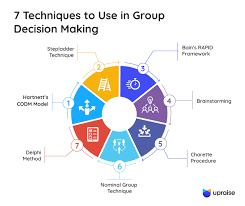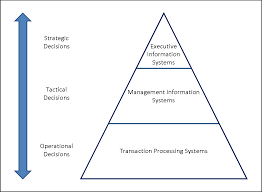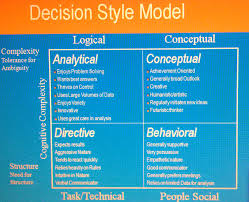The Decision Making Process
Decision making is a crucial aspect of our daily lives, influencing the outcomes of various situations and shaping our future. Understanding the decision-making process can help us make better choices and achieve our goals more effectively.
Identify the Decision to be Made
The first step in the decision-making process is to clearly identify the decision that needs to be made. This involves defining the problem or opportunity that requires a decision.
Gather Information
Once the decision is identified, it is important to gather relevant information that will help in evaluating different options. This may involve conducting research, seeking advice from experts, or analyzing past experiences.
Consider Alternatives
After gathering information, it is essential to consider all possible alternatives or courses of action. This step allows for a comprehensive evaluation of different options before making a final decision.
Evaluate Options
Each alternative should be carefully evaluated based on criteria such as feasibility, potential outcomes, risks, and benefits. This evaluation helps in determining which option aligns best with your goals and values.
Make the Decision
Once all alternatives have been evaluated, it is time to make a decision. It is important to consider both rational analysis and intuition when making a choice that feels right for you.
Implement the Decision
After making a decision, it is crucial to implement it effectively. This may involve creating an action plan, allocating resources, and communicating the decision to relevant stakeholders.
Review and Learn
The final step in the decision-making process is to review the outcomes of your decision and learn from your experiences. Reflecting on past decisions can help improve future decision-making skills.
In conclusion, mastering the decision-making process can lead to better choices and improved outcomes in various aspects of life. By following these steps and continuously refining your decision-making skills, you can navigate through challenges with confidence and clarity.
8 Key Steps to Enhance Your Decision-Making Process: Balancing Information, Intuition, and Logic
- Define the decision that needs to be made.
- Gather all relevant information and data.
- Consider the potential outcomes of each option.
- Evaluate the risks and benefits associated with each option.
- Consult with others for different perspectives.
- Take your time to think things through, but avoid overthinking.
- Trust your instincts and intuition, but also rely on logic and reasoning.
- Make a decision based on a balance of information, intuition, and logical reasoning.
Define the decision that needs to be made.
Defining the decision that needs to be made is a crucial first step in the decision-making process. By clearly identifying the problem or opportunity at hand, individuals can focus their efforts on finding the most effective solution. This initial step sets the foundation for the entire decision-making process, guiding subsequent actions such as gathering information, considering alternatives, and evaluating options. Without a clear understanding of the decision that needs to be made, individuals may struggle to make informed choices and achieve their desired outcomes.
Gather all relevant information and data.
Gathering all relevant information and data is a crucial tip in the decision-making process as it provides a solid foundation for evaluating different options and making informed choices. By collecting comprehensive information, including facts, statistics, expert opinions, and past experiences, individuals can gain a deeper understanding of the problem or opportunity at hand. This step helps in minimizing uncertainties and biases, enabling a more objective analysis of alternatives. Ultimately, having all relevant information at hand empowers individuals to make well-informed decisions that are more likely to lead to successful outcomes.
Consider the potential outcomes of each option.
When making decisions, it is crucial to consider the potential outcomes of each option. By evaluating the possible consequences of different choices, we can better assess their impact on our goals and values. This step in the decision-making process allows us to make more informed decisions that align with our desired outcomes and minimize risks. Considering the potential outcomes helps us weigh the pros and cons of each option, ultimately leading to a more thoughtful and strategic decision-making approach.
Evaluate the risks and benefits associated with each option.
When making decisions, it is essential to carefully evaluate the risks and benefits associated with each option. By assessing the potential outcomes and consequences of each alternative, you can make a more informed choice that aligns with your goals and values. Understanding the risks involved allows you to mitigate potential pitfalls, while recognizing the benefits helps you capitalize on opportunities for growth and success. Taking the time to thoroughly evaluate the risks and benefits of each option can lead to more confident decision-making and ultimately better results in the long run.
Consult with others for different perspectives.
Consulting with others for different perspectives is a valuable tip in the decision-making process. By seeking input from individuals with diverse viewpoints and experiences, you can gain valuable insights that may not have been considered otherwise. This approach can help you see the situation from multiple angles, identify potential blind spots, and make a more informed decision. Collaborating with others not only enhances the quality of your decision but also fosters a sense of teamwork and inclusivity in the decision-making process.
Take your time to think things through, but avoid overthinking.
When navigating the decision-making process, it is essential to strike a balance between thoughtful consideration and avoiding overthinking. Taking the time to ponder different options and potential outcomes allows for a more thorough evaluation of choices. However, getting caught up in overthinking can lead to indecision and unnecessary stress. By finding a middle ground between careful deliberation and avoiding excessive rumination, you can make decisions with clarity and confidence.
Trust your instincts and intuition, but also rely on logic and reasoning.
When navigating the decision-making process, it is essential to strike a balance between trusting your instincts and intuition, while also relying on logic and reasoning. Instincts and intuition can provide valuable insights that may not be immediately apparent through rational analysis alone. However, incorporating logic and reasoning allows for a more comprehensive evaluation of options and potential outcomes. By combining these two approaches, you can make decisions that are not only guided by gut feelings but also grounded in sound judgment and thoughtful consideration.
Make a decision based on a balance of information, intuition, and logical reasoning.
When making decisions, it is essential to strike a balance between information, intuition, and logical reasoning. By considering all three factors, you can make a well-rounded and thoughtful decision that takes into account both the facts at hand and your gut feelings. Information provides the necessary data to analyze the situation, intuition offers insight based on your instincts and emotions, and logical reasoning helps in evaluating the pros and cons of each option. Incorporating all three elements ensures a comprehensive approach to decision making that is both informed and intuitive.




